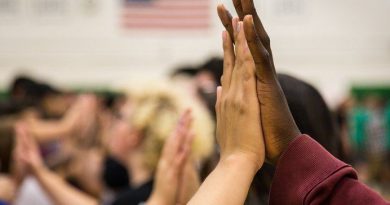Formative Assessment in Distance Learning
Schools are closed but schooling goes on, and it remains crucial that teachers find ways to see what students are learning.
Whether we use synchronous or asynchronous online sessions, whether we call it distance or virtual learning, we’re all challenged to provide meaningful educational experiences at a distance as the education world grapples with the impact of COVID-19. This type of learning is nothing new, but it is new to many of us and has caused us to quickly shift our practices.
Formative assessment at a distance is challenging but possible, and we still need to check for understanding and provide meaningful feedback. The practices we use will look and sound different than they do in the classroom. Here are some ideas to consider.
Formative Assessment at a Distance
Know your purpose: There are so many tools to use to check for understanding. As it is important to have routines and still have variety, select two to four tools that work well for you and your students. Focusing on just a few allows students to experience tools they’re used to, while also ensuring that checking for learning doesn’t get boring.
Make sure the tools you use fit your purpose. If you need to see students’ process, select a tool that can capture that, such as Animoto or Flipgrid. If you need to check their content knowledge, try Kahoot or Quizlet.
Collect data over time: Formative assessment is a process, and it’s important to collect evidence of learning over time. While you may teach and dictate which digital tools students can use, work with students to have them document their learning along the way. Give them guides or checkpoints to let them know what they need to submit and when they need to do so.
You might ask students to submit reflection videos in Seesaw or send photos of their progress. Screenshots and scanning tools also work well. You can partner with parents to take those videos or photos, especially for students in the younger years.
Focus on feedback: When checking for understanding, it’s important to communicate the feedback that comes from it. As a teacher, you can provide written and/or oral feedback through videos or sound recordings. If you’re doing synchronous sessions, you can put students in breakout groups to provide feedback to one another—if you do this, you’ll need to give them clear feedback rules. Asynchronously, students can post work and provide feedback over a longer timeframe.
Check for understanding in synchronous sessions: Those in-the-moment checks for understanding that we did in the classroom were valuable, allowing us to adjust instruction and meet students where they were. That kind of check-in is still important. Some synchronous tools have built-in formative assessment capabilities, such as Yes and No buttons, and some have private chat features that can allow you to know, in real-time, what students know and don’t know. You can supplement a tool like a Zoom with Peardeck to assess along the way if those functions are not available.
These check-ins help you provide just-in-time feedback, and can guide your thinking about who might need further support later through resources, intervention, or small-group instruction through breakout groups in a synchronous session.
Leverage personal conversations: Conversing with students remains the most powerful and meaningful way to check for understanding, in my opinion. In our distance learning environment, we run the risk of being further isolated. By scheduled individual sessions with students, we can assess their learning and provide feedback with a real human connection. In fact, we should be focusing more on these types of assessments in the distance learning environment, Video tools like Marco Polo and Flipgrid can bring a human element to the assessment process.
Check-in on SEL: In addition to checking in on academic learning, be sure to check in on students’ well-being and their overall distance learning experience. Simple questions can prompt students to share their feedback:
- What’s working?
- What’s not working well?
- What would you recommend?
This is crucial because this way of learning is newer for almost all of us and thus requires ongoing reflection and feedback. We recently asked these questions at my school in high school and found out that students were struggling with extended synchronous sessions. We modified the sessions to be shorter and provided more breaks too.
Similarly, at an elementary school in China where a friend of mine works, students kept saying they missed seeing their teachers. The teachers knew they couldn’t replicate the powerful in-person experience, but they decided to record weekly personal videos for their students to share feedback and more importantly, connect with students on a human level. Use formative assessment to adjust instruction and stay true to social and emotional learning.
Make it useful: Data is useless unless it is used. When we collect and examine formative assessments, we need to use what we learn from them to inform instruction. We might find out that asynchronous session didn’t go so well, and thus a reteach needs to be offered in a different way, or that specific students need further support and resources, or that only a small group of students stay for the last part of a synchronous session while the rest sign off. All of those data points tell us something we can use to provide timely feedback, adjust instruction, and plan ahead.
Source: https://www.edutopia.org/article/formative-assessment-distance-learning




